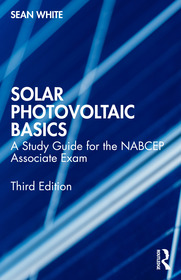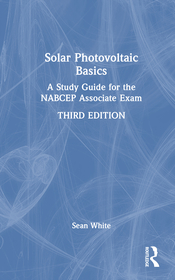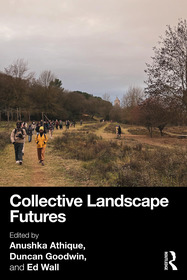
Postharvest Nanotechnology for Fresh Horticultural Produce
Innovations and Applications
Series: Innovations in Postharvest Technology Series;
- Publisher's listprice GBP 64.99
-
31 048 Ft (29 570 Ft + 5% VAT)
The price is estimated because at the time of ordering we do not know what conversion rates will apply to HUF / product currency when the book arrives. In case HUF is weaker, the price increases slightly, in case HUF is stronger, the price goes lower slightly.
- Discount 10% (cc. 3 105 Ft off)
- Discounted price 27 944 Ft (26 613 Ft + 5% VAT)
Subcribe now and take benefit of a favourable price.
Subscribe
31 048 Ft

Availability
Estimated delivery time: In stock at the publisher, but not at Prospero's office. Delivery time approx. 3-5 weeks.
Not in stock at Prospero.
Why don't you give exact delivery time?
Delivery time is estimated on our previous experiences. We give estimations only, because we order from outside Hungary, and the delivery time mainly depends on how quickly the publisher supplies the book. Faster or slower deliveries both happen, but we do our best to supply as quickly as possible.
Product details:
- Edition number 1
- Publisher CRC Press
- Date of Publication 28 September 2025
- ISBN 9780367695583
- Binding Paperback
- No. of pages485 pages
- Size 254x178 mm
- Weight 900 g
- Language English
- Illustrations 53 Illustrations, black & white; 12 Halftones, black & white; 41 Line drawings, black & white; 49 Tables, black & white 699
Categories
Short description:
This book has been edited to advance understanding of material development, intelligent selection of nanomaterials to ensure the nontoxic nature, and future perspectives of nanotechnology on postharvest produce.
MoreLong description:
Food scarcity and insecurity is an alarming issue throughout the world. Postharvest loss due to both mechanical damage and microbial spoilage significantly influences the shelf life and hence the availability of agricultural produce. Once initiated, the microbial spoilage can make bulk quantity of a given agricultural product unacceptable for human consumption, and several methods have already been used to try to manage this. Considering the limited success of the available methods, there is increasing interest in exploring nanotechnological methods. These methods are being considered for both the development of various platforms for antimicrobial/barrier packaging applications that minimize the contact of agricultural produce with the external environment, and also for design sensors to ensure food safety and quality.
The impact of various nano-systems developed through material engineering on the shelf-life enhancement and storage of fresh horticultural produce will have revolutionary effects on post-harvest management in the coming years. Hence, Postharvest Nanotechnology for Fresh Horticultural Produce has been edited to advance understanding of material development, intelligent selection of nanomaterials to ensure the nontoxic nature, and future perspectives of nanotechnology on postharvest produce. This includes various types of nanoparticles exploited for the postharvest management, their mechanism of action, varied applications and material engineering, along with natural products including essential oils and plant bioactives, modelling of various tailor-made materials to meet the required properties of the packed food, advancements in the nanotechnological applications for the minimally processed food, and the toxicity concerns.
Key Features:
· Describes advances in nanotechnology for postharvest management
· Includes extensive details on the applications of material engineering for post-harvest applications using nanotechnology and future aspects
· Provides extensive data on the types of nanomaterials used and the fabrication methods employed for the design of tailor-made products for the post-harvest management
This book reviews the current scientific advancements and future prospects of the nanotechnological interventions in meeting the quality and quantity standards of the horticultural produce and minimally processed food and will be a valuable reference for beginners, researchers, subject experts, and industrialists.
MoreTable of Contents:
1. Introduction to nanotechnological applications in the postharvest processing of fresh horticultural produce 2. Synthesis and characterization methods for the nanobased materials for the postharvest storage of horticultural produce 3. Organic nanoparticles in postharvest management and the mechanism involved 4. Cellulose nanoparticles for postharvest management and the mechanism involved 5. Inorganic/ metallic nanoparticles in postharvest management and the mechanism involved 6. Mechanism of silver nanoparticles based postharvest technologies 7. Nanoclay based methods for the postharvest processing of horticultural produce 8. Hybrid nanomaterials for postharvest storage 9. Engineering the nanobased packaging materials for the post harvest storage 10. Advancements in the essential oil based packaging materials 11. Bio active nano-based packaging for postharvest storage of horticultural produce 12. Nanotechnology in shelf life enhancement of minimally processed horticultural produce 13. Modeling and simulation of gas barrier properties of nanocomposites used for packaging applications 14. ZnO nanoparticles based methods for the minimally processed horticultural produce 15. Phytonanocomposites for minimally processed horticultural produce 16. Toxicity aspects of nanoparticles and their composites being used in the Postharvest Nanotechnology 17. Life cycle assessment: a tool to evaluate the environmental impact of nanomaterials used in food packaging – modification suggested by authors 18. Global status of nanotechnology policies in packaging sector 19. Future Scope of Nano Based Methods for the Improvement of Postharvest Technologies and Increased Shelf Life of Minimally Processed Food 20. Nano based methods for the improvement of postharvest technologies and increased shelf life of minimally processed food
More






